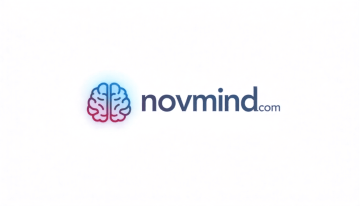This supporting article clears up the misconceptions that block adoption of AI automation and slow teams down. Use it to reset expectations, align stakeholders, and choose practical next steps.
Part of our Automate cluster. For the full foundation, read the pillar article:
The Ultimate Guide To AI Automation For Growth.
AI automation is no longer experimental—it is how modern companies scale. Yet many teams still hesitate to implement it widely. The reason is not a lack of tools or talent; it is a set of persistent myths that distort expectations and stall action. In this article, we unpack the most common misconceptions, explain what the data and practice actually show, and outline how to move forward with confidence.
Myth 1: AI automation replaces human jobs completely
This is the fear that stops projects before they start. In reality, automation excels at repetitive, rules-based work and pattern recognition. People excel at empathy, strategy, creative problem solving, and complex judgment. The most successful implementations blend both: AI handles the volume; humans handle the nuance. Roles evolve—toward higher-value work—rather than disappear.
Myth 2: AI automation is only for big corporations
Enterprise headlines can make AI feel out of reach, but small and medium businesses are some of the fastest adopters. Cloud pricing, no-code builders, and strong templates make high-leverage use cases—like lifecycle emails, lead routing, and ticket deflection—attainable for lean teams. For a marketing deep dive, see our complementary guide,
ActiveCampaign for intelligent email automation.
Myth 3: AI automation is too expensive to deliver roi
Cost concerns are legitimate, but the math often favors automation. Savings come from hours reclaimed, errors prevented, cycle times shortened, and conversions lifted. Start with one measurable workflow, prove the lift against a baseline, and scale from there. A focused pilot typically pays for itself within a quarter when tied to revenue-adjacent outcomes.
Myth 4: AI automation requires advanced technical skills
Early systems demanded specialized teams. Today’s platforms ship with visual builders, prebuilt recipes, and guardrails that let business users design flows safely. IT still matters for governance and data access, but marketing, support, and operations can now iterate daily. For cross-app orchestration examples, explore
Zapier AI for smarter cross-app workflows.
Myth 5: AI automation is set and forget
No meaningful automation is purely hands-off. Models drift, customer behavior changes, and processes evolve. Build in monitoring, alerting, and review cadences. Treat your automations like products with owners, roadmaps, and feedback loops. Conversational tools, for instance, improve as data grows—but they still need guardrails. See
Drift AI for real-time lead qualification
for lessons on continuous tuning.
Myth 6: AI automation makes customer experiences impersonal
It can—if misused. Done well, automation powers hyper-personalization at scale. Journeys adapt to individual behavior, content changes in real time, and response times drop from hours to minutes. The goal is not to remove humans; it is to remove friction so humans can focus where they add the most value.
Myth 7: AI automation works the same in every industry
Patterns rhyme across sectors, but constraints differ. Healthcare and finance require stricter controls and auditability; ecommerce may prioritize speed and experimentation. Borrow ideas, but tailor data sources, guardrails, and metrics to your regulatory and customer context.
Myth 8: Automation success is just about the tool
Tools matter, but outcomes hinge on process design, data quality, and change management. Without clear owners, clean inputs, and aligned incentives, even the best platform underperforms. Start with a business goal, map the workflow, and only then pick the technology that fits.
What actually drives success
Successful teams follow a repeatable playbook. They choose high-frequency, low-risk candidates; define measurable targets; and launch limited pilots. They document edge cases, keep humans in the loop, and scale with governance. They also communicate transparently—explaining what the automation does and how users can reach a person when needed.
- Start small: Pick one workflow with clear KPIs and strong data.
- Instrument performance: Track throughput, error rates, latency, and business impact.
- Integrate thoughtfully: Connect CRM, support, analytics, and billing to avoid silos.
- Review regularly: Schedule model and rule reviews; refine based on feedback.
- Protect trust: Provide escalation paths, audit trails, and privacy controls.
Where to start if you are unsure
If you need a low-friction entry point, begin with one of three patterns that show fast, visible gains:
- Lifecycle messaging: Recover abandoned carts, nurture trials, or re-engage churn risks using behavior-based flows.
- Lead qualification: Use conversational AI to capture context and route high-intent visitors to the right rep instantly.
- Cross-app hygiene: Automate enrichment, deduplication, and status syncs across CRM, help desk, and billing.
Each of these has clear baselines and measurable lift, making them ideal pilots before expanding to more complex processes.
Looking ahead
The myths fade as teams see results. With a focused pilot, disciplined measurement, and a human-centered approach, AI automation becomes a durable growth lever. For broader strategy, use cases, and governance guidance, continue to the pillar article:
The Ultimate Guide To AI Automation For Growth.
Related complementary guides
- ActiveCampaign for intelligent email automation
- Drift AI for real-time lead qualification
- Zapier AI for smarter cross-app workflows
Note: Supporting and complementary articles link back to the pillar to consolidate topical authority. This page does not include any affiliate calls to action or product pushing.

